Is Bruges Worth Visiting? My Honest Opinion Based on Real Visits

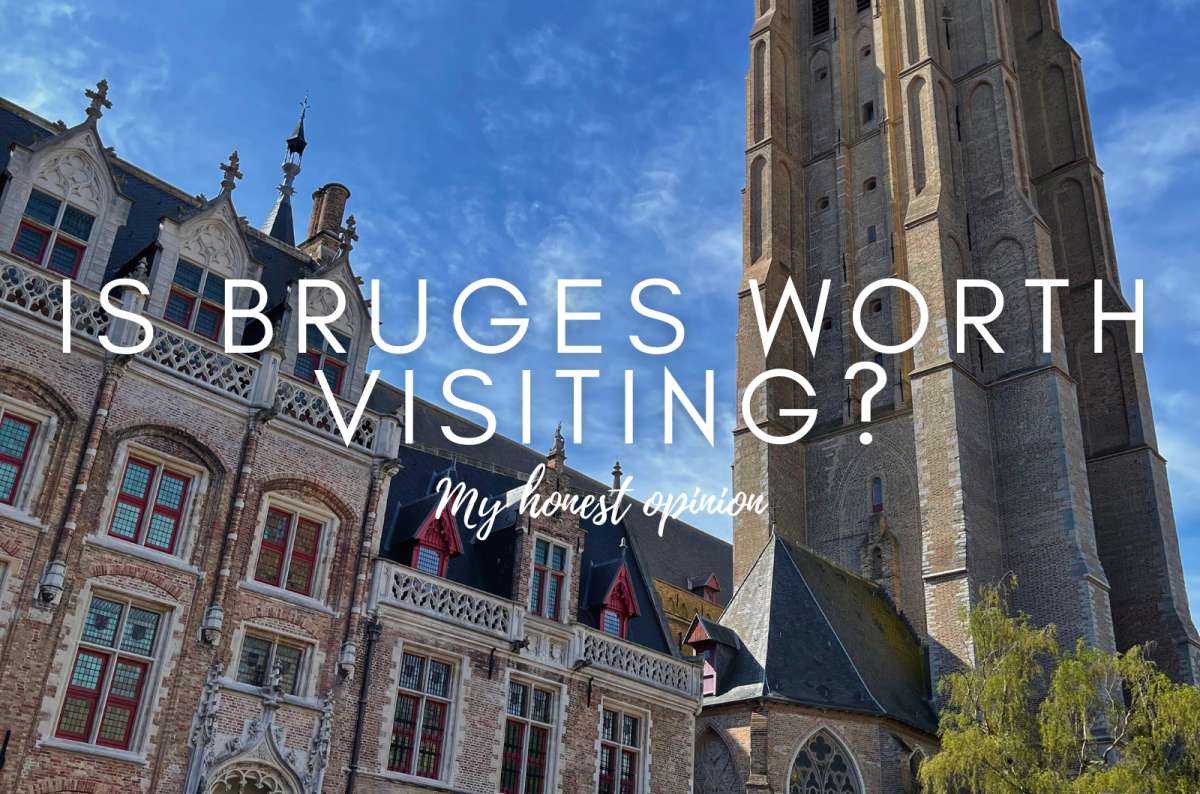
Quick rankings from my Bruges visit
4. Is Bruges worth visiting for the romantic atmosphere?
5. How to make the most of Bruges
7. What the architecture in Bruges Old Town looks like
8. How many days do you need in Bruges?
9. Bruges is very easy to visit on a day trip from Brussels
10. Where to find restaurants, waffles, and chocolate shops in Bruges
11. Focus on world famous Belgian beer in Bruges
12. Driving and parking in Bruges: don’t
Is Bruges worth visiting? Yes—but only for a short stay. Bruges is a stunning Belgian city and it has the canals, Gothic churches, and medieval streets… but you’re right to question its tourist-favorite status if it sounds a little too good to be true.
Because you know what? It’s not just ALL amazing and romantic and canal-y. It’s also very touristy, crowded, and expensive, and there’s not an endless list of unique things to do and see.
I’ve been to Bruges twice now and can tell you exactly what it’s like. I’ll help you understand why visit Bruges—and you’ll get it directly from someone with firsthand experience.
Does Bruges deserve more than a quick visit?—this article will give you a clear answer.
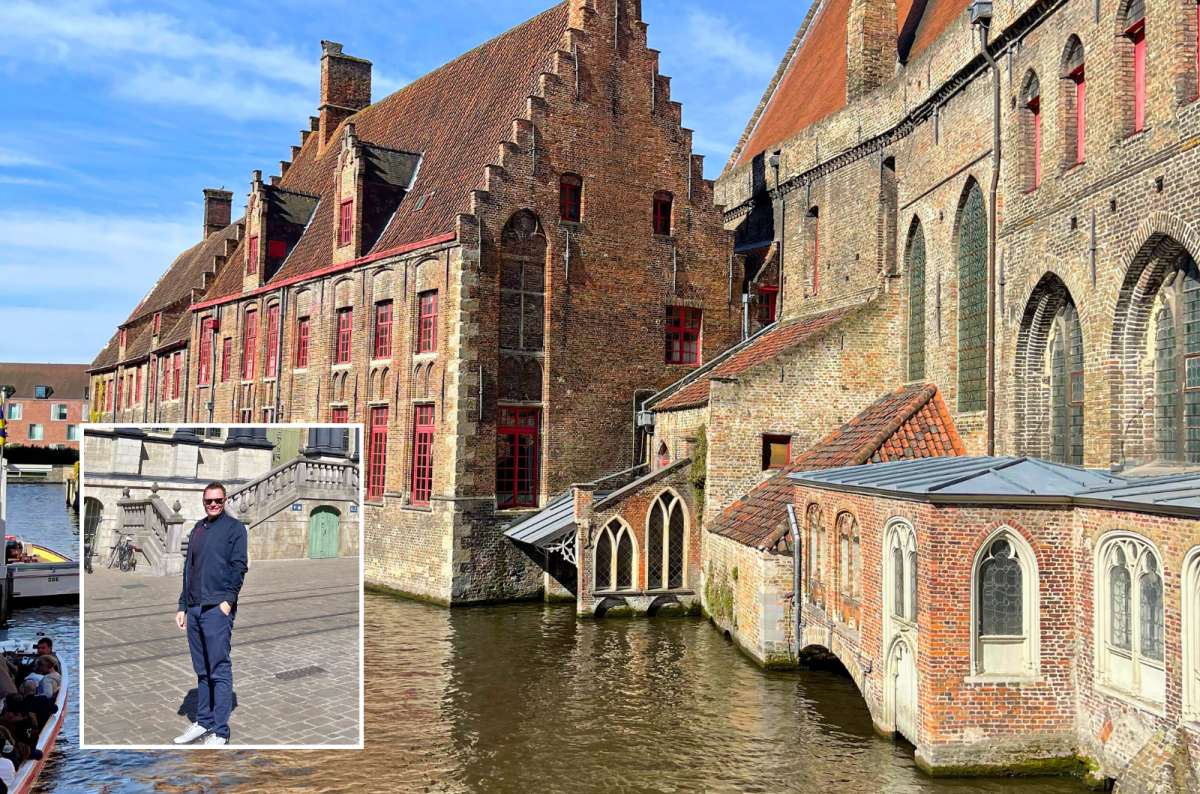
Bruges: Where canals meet centuries-old charm
My article will:
- Break down Bruges’ pros and cons honestly
- Explain why Bruges is worth visiting—and what might disappoint you
- Show how to make the most of a short trip
- Tell you exactly how long you need in Bruges
- Rank Bruges on value for money, things to do, getting around, food, and atmosphere
Armed with this info, you can plan your trip to Bruges with accurate expectations and enjoy the heck out of your trip.
Quick rankings from my Bruges visit
-
Value for money: 8/10
-
History and architecture: 9/10
-
Things to do in a day: 9/10
-
Infrastructure and parking: 6/10
-
Food and café scene: 8/10
-
Overall experience: 85 %
Sometimes, all you need to do is take the first step... I've filtered out the best hotels in Bruges for you
Save it for yourself to come back to later, or share with your friends on social media!
I've already planned your ititnerary for the trip, complete with my travel tips.
1. Who will enjoy Bruges?
Bruges if perfect for you if you’re visiting Belgium for the first time and you’re looking to hit the country’s most famous places. If you’re hoping for a compact historical center with narrow streets lined with historic buildings and a romantic maze of canals and bridges that Bruges (Brugge) is known for—you won’t be disappointed.
But you also need to understand that EVERYONE visits Bruges, which sort of confirms that Bruges is absolutely worth visiting. But don’t expect a relaxing village vibe where you’re mingling with locals and seeing authentic Belgian life unfold as you sip your beer peacefully.
If anything, Bruges almost feels staged and extremely tourist-ready. If you’re ok with this aspect, you’ll do just fine.
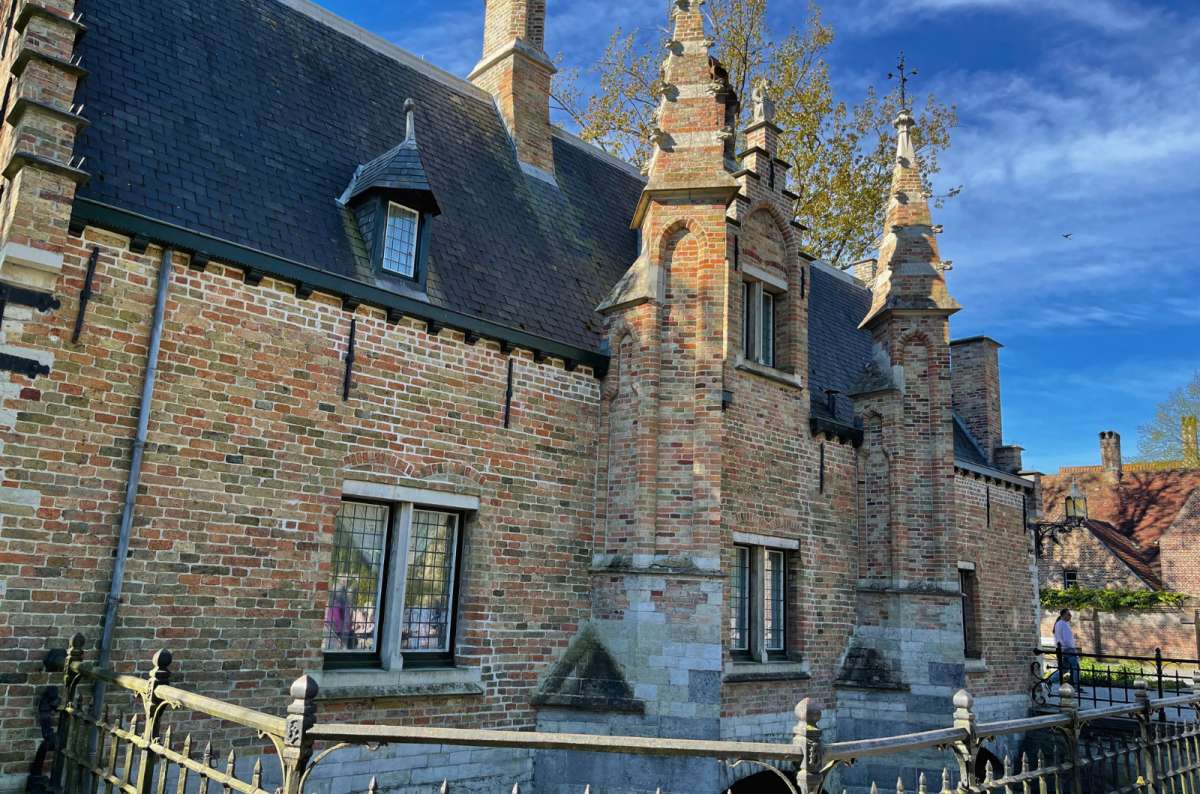
Sashuis on the edge of the peaceful Beguinage of Bruges is one of the most serene spots in the city
You’ll enjoy Bruges if:
-
you love compact, walkable city centers
-
canals get you excited
-
you are looking for an easy day trip from Brussels
-
you are interested in Belgian beer culture and waffles
-
you can look past the crowds or just accept them as part of the fun or visit Bruges in spring when there are slightly less or them

Why visit Bruges? For the picture-perfect streets, iconic bridges, and a beer culture that’ll have you sipping your way through history—even if you’re sharing it with a few (thousand) other tourists
Pro tip: Visit Bruges in the spring for fewer crowds. I went in April last time and the weather was just perfectly sunny and warm enough for an all-day scenic walk along the stunning architecture.
2. Who should skip Bruges?
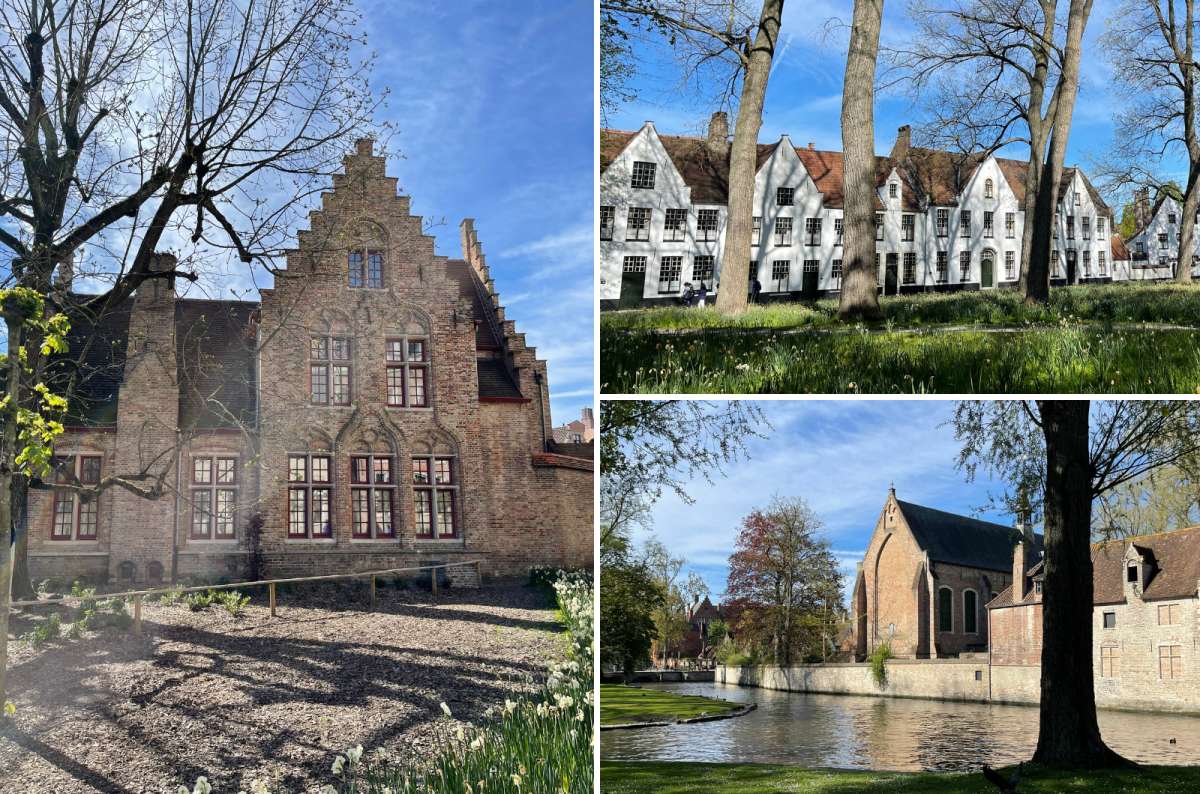
Peaceful stroll through the historic Bruges Beguinage, a UNESCO-listed gem
I don’t think anyone should outright skip Bruges and won’t say Bruges isn’t worth visiting at all, but experienced travelers and those that are easily annoyed with busloads of day trippers should consider keeping their Bruges visit short and spend extra time in Ghent instead—it has similar vibes but is much more local (and I personally like it better than Bruges).
The things to do in Bruges are limited—you can only explore so many brick building-lined streets and canals before they all start looking the same. Luckily, there are some good museums, galleries, and breweries to keep you occupied! I’ll go into more detail below.
Pro tip: If you’re planning on visiting Bruges in the summer, aim for a weekday. It’s high tourist season and it was a bit much for me, to be honest.
Skip Bruges if:
-
you are looking for a hidden gem town in Belgium
-
you can’t handle tourist crowds
-
you have several days to spend in Bruges—only spend one day in Bruges and add at least a full day in nearby Ghent (or see my other day trips from Brussels for other great stops to add).


If Bruges feels too polished and touristy, Ghent is your perfect Belgian alternative (it has canals too)
3. What is Bruges known for?
Are you wondering why to visit Bruges? In summary, Bruges is best known for:
-
its perfectly preserved medieval old town, a UNESCO World Heritage Site
-
cobbled streets, numerous canals, and Gothic architecture
-
things to do like visit the Belfry tower, picturesque Markt Square, and rows of brick houses along the canals
-
Belgian chocolate shops, lace, beer, and a romantic charm
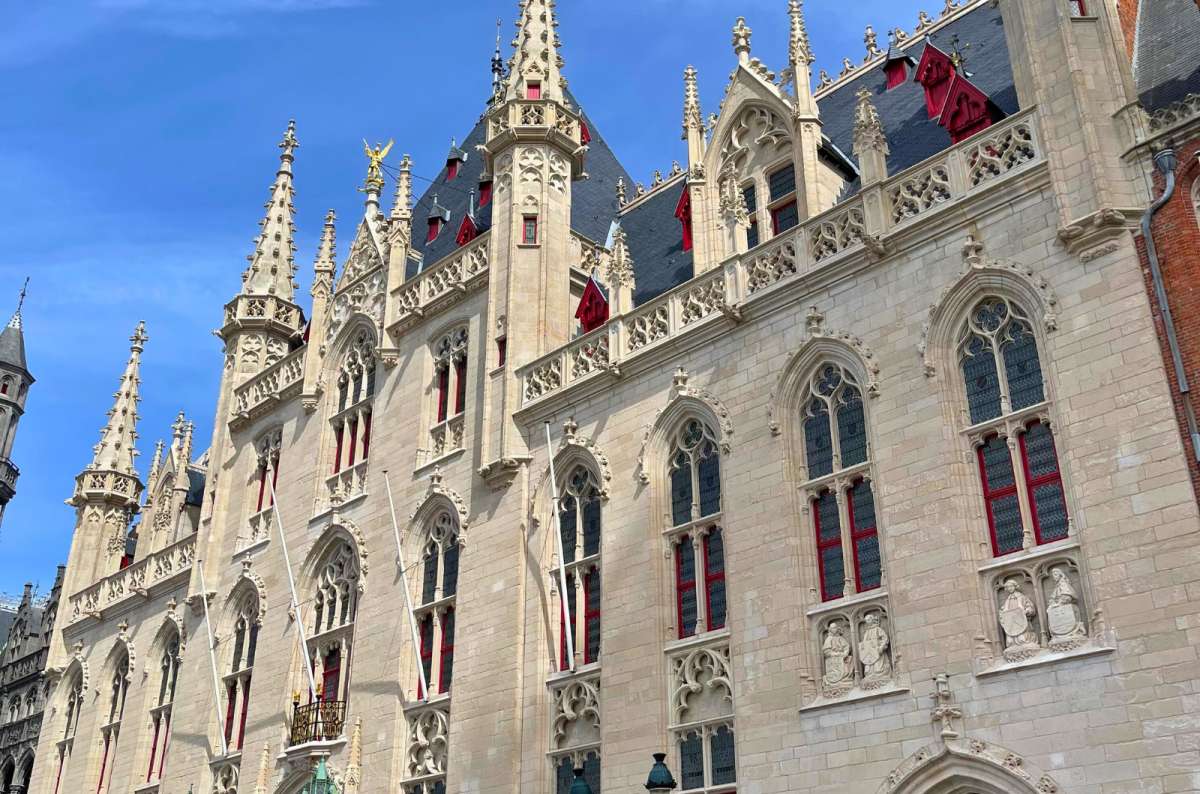
If you're wondering why to visit Bruges, sights like the magnificent Provincial Palace are a pretty solid reason
For me, the top thing to do in Bruges besides soaking in the atmosphere was the incredible Bruges Beer Experience. Read about the tour here:

Top 10 things to do in Bruges
- Tour the Bruges Beer Experience & De Halve Maan Brewery
- Climb Bruges Belfry Tower for the best panoramic view in Bruges
- Admire the very tall tower of Church of Our Lady Bruges
- Look at the architecture on Market Square & Burg Square
- Hop on a boat for a Bruges canal tour
- Eat amazing steak and have a waffle for dessert
- Learn at Choco-Story Museum and buy souvenirs at chocolate shops
- Walk across dozens of bridges
- Find the city’s old windmills
- Relax at the stunning white Beguinage & Minnewater Park
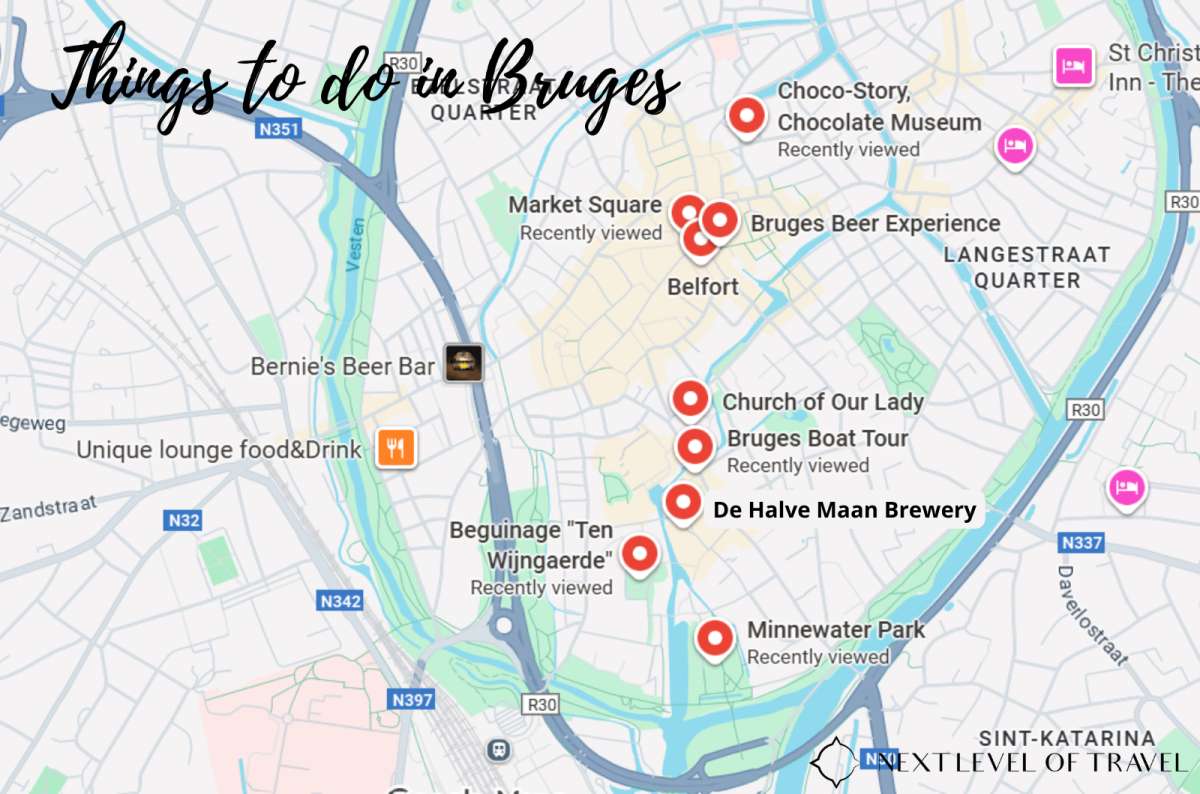
A quick overview of things to do in Bruges—perfect for planning your walking route through the city!
4. Is Bruges worth visiting for the romantic atmosphere?
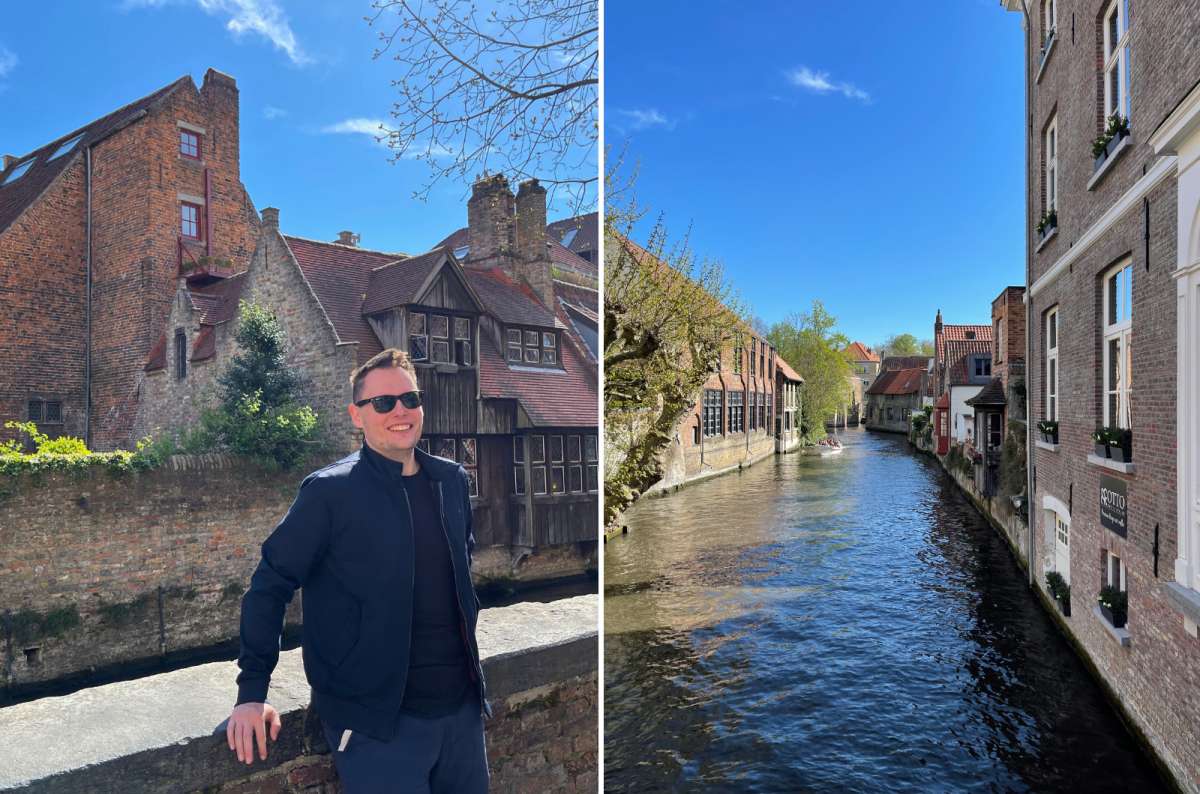
Fairytale corners like these are Bruges' specialty
The one thing that Bruges does extremely well is the romantic atmosphere, which is brought on by the typical brick houses and their position on the canals. Bruges undeniably packs on the charm in one a small area that’s super close to the train station, the tourist attractions are dense and easy to find, and there are two bridges that claim to find eternal love for you. It’s basically impossible to visit Bruges and not fall in love!
5. How to make the most of Bruges
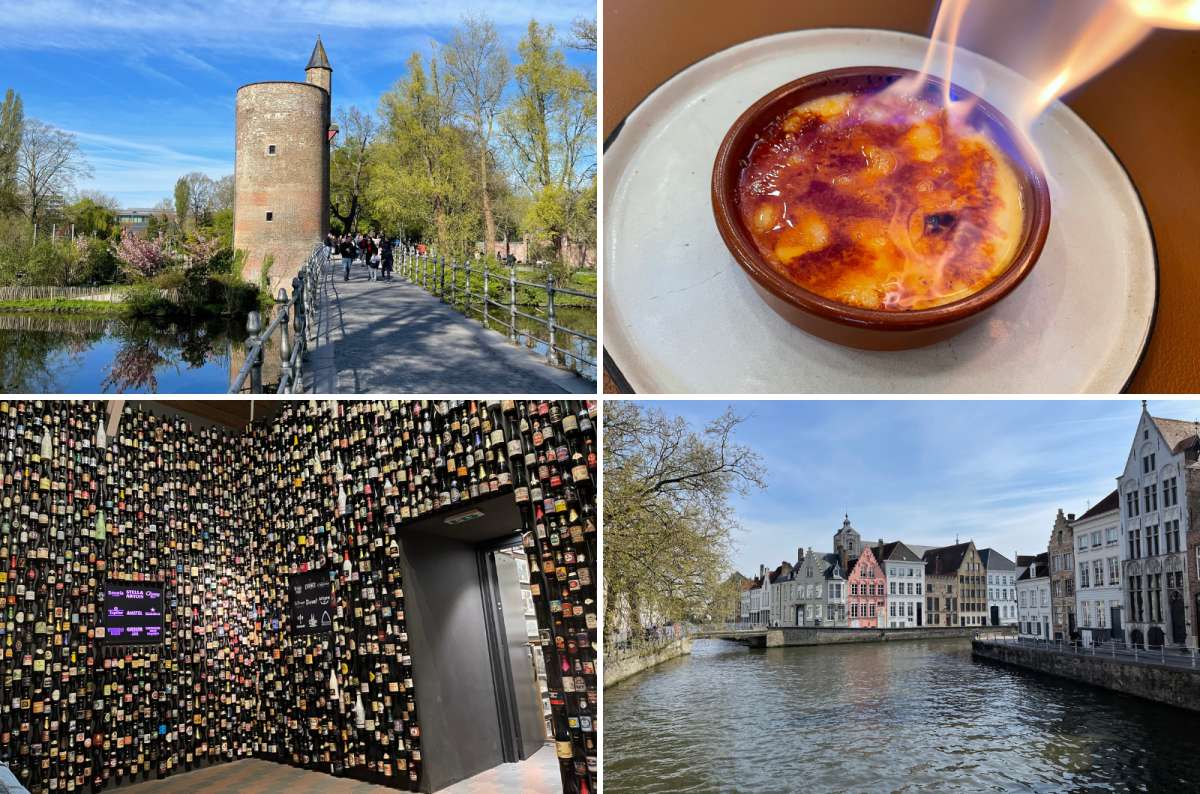
A bit of everything that makes Bruges worth a visit—views, beer, quiet corners, and good food
I think the best way to experience Bruges is to mix the big-ticket sights with its more unique spots, and adding good food and drinks as a cherry on top.
See the classics like the Belfry, main squares, and canals and bridges, but balance them out with quieter places like the Beguinage and Minnewater Park. Eat proper waffles, try Flemish stew or a steak, and do a Belgian beer tasting—and you’ll get the most out of your Bruges visit.
It’s this combination of landmarks, hidden corners, and food that makes a short Bruges trip worthwhile.
My secret tip is to visit Bruges in the spring. Many people don’t know that Bruges in the summer means not just more tourists, but also more rain!
6. Bruges is expensive!
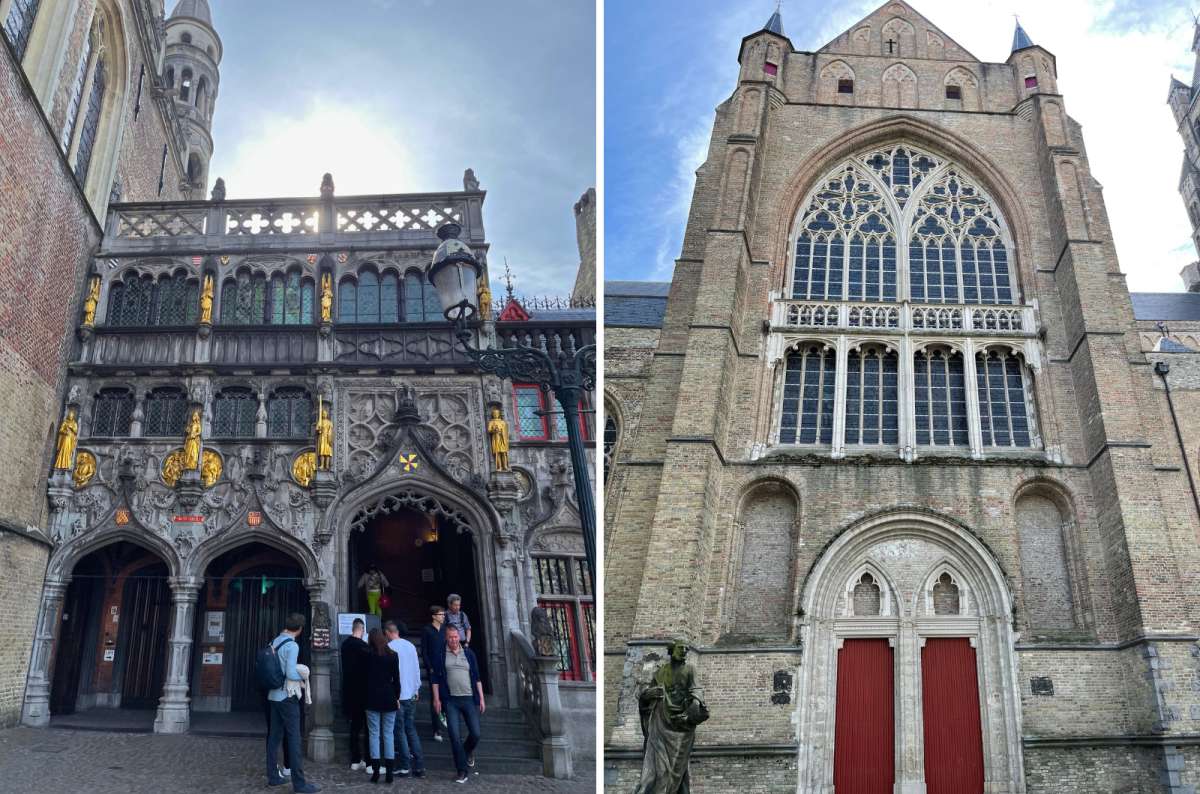
Beautiful architecture, yes—but remember that Bruges’ center comes with a premium price tag
Bruges is the priciest of Belgium’s popular tourist cities. Hotels, especially in the historic center, all lean toward boutique and romantic stays and are noticeably more expensive than Ghent’s, even surpassing Brussels. A room in a good 4- or 5-star hotel can cost EUR 200 to 300.
Restaurants in Bruges are very much geared toward tourists, so expect higher bills if you’re eating in the historic center, and check reviews so you’re not paying premium for a tourist trap lunch. Dinner for 2 at a nice restaurant costs EUR 70–80. A pint of beer is EUR 6+ in the tourist area.
If you’re watching your budget on your Belgium trip, Bruges won’t stretch your euro as far. Bruges is worth a visit, but keep it to one or two days maximum.

7. What the architecture in Bruges Old Town looks like
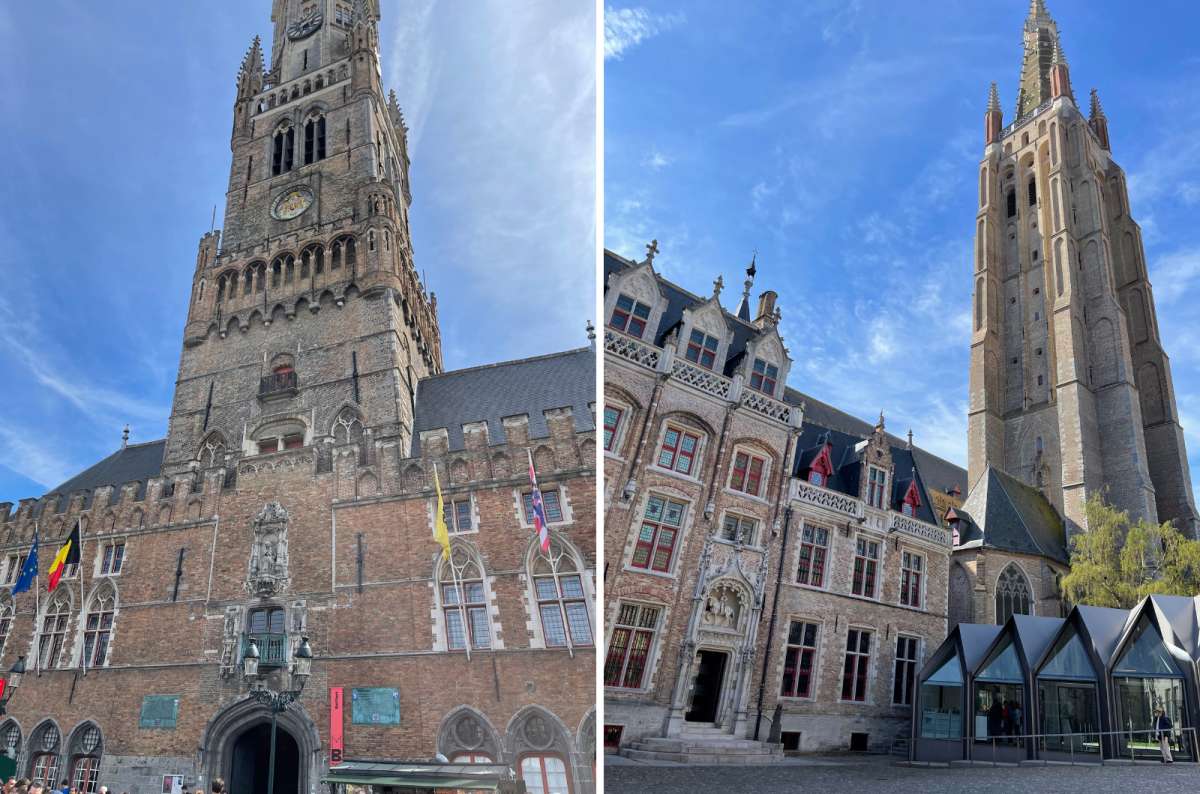
Bruges stuns with its Gothic icons like the Belfry and Church of Our Lady—just two of the 1,200+ heritage buildings that earned it a UNESCO listing
Bruges is a medieval city and the historic center is packed with over 1,200 protected, beautiful buildings, which is why it got its spot on the UNESCO Heritage List in 2000.
You’ll see Gothic churches, the 83-meter Belfry, and dozens of old merchant houses that show how rich the city once was. The typical houses are tall, narrow, and finished in red brick—typical Flemish style. You can take a canal boat tourto really enjoy the view (and even some hidden gardens you can only see from the water).
Fun fact: The street layout has hardly changed since the 14th century, so when you explore Bruges today, you’re following the same routes merchants once used!
8. How many days do you need in Bruges?
Bruges is small*, and after your third church, twelfth brick building, and a few hours along the canals, there isn’t much left that will surprise you. Bruges is worth a visit as a day trip or as a full-day tour with an overnight (my hotel choice if you want to treat yourself: Hotel Dukes' Palace).
*Remember, we’re just talking about the small historic center—outside of it, Bruges looks like any other normal Belgian town. Supermarkets, schools, office buildings, wider roads. The usual.
I honestly don’t know what people do here for longer. One day in Bruges is plenty. It’s enough to cover all the highlights + food and beer + a few unique spots like a brewery tour and even the old windmills.

9. Bruges is very easy to visit on a day trip from Brussels
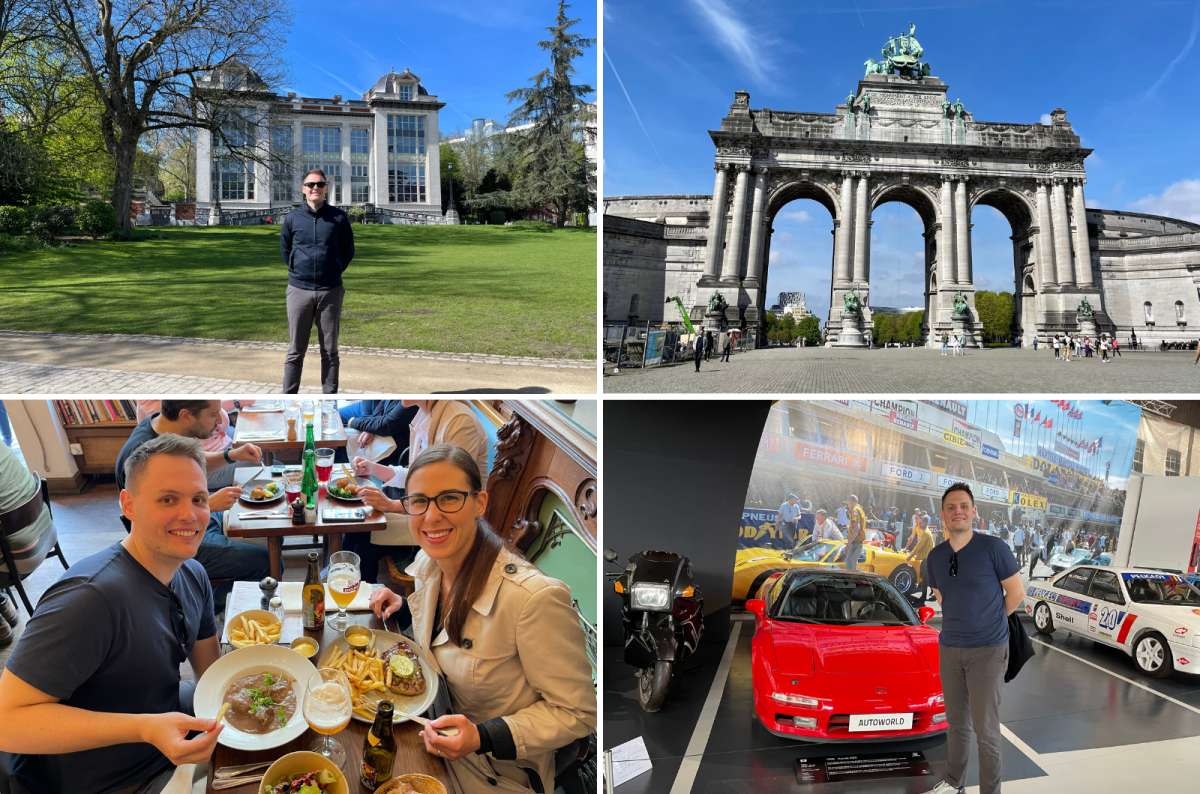
Spend some time exploring Brussels, then take a fast train to Bruges for canals, charm, and cobblestones—all in one weekend
One of things that makes Bruges worth visiting on a day trip is how easy it is to reach from Brussels and how different of a vibe you get so quickly. You don’t even need to spend a night to explore Bruges.
In less than an hour by train, you’ll arrive at Brugge train station and can literally walk into the tourist area within a couple of minutes from there.
Bruges’ tourist attractions are all close together and everything is walking distance and can be seen easily within a day—you can walk across the historic core in about 20 minutes.
Pro tip: I’ve got a fully detailed one day in Bruges itinerary for you if you want to know how to plan your Bruges trip.
If you have a long weekend, I strongly recommend combining Bruges and Ghent into one trip.

10. Where to find restaurants, waffles, and chocolate shops in Bruges
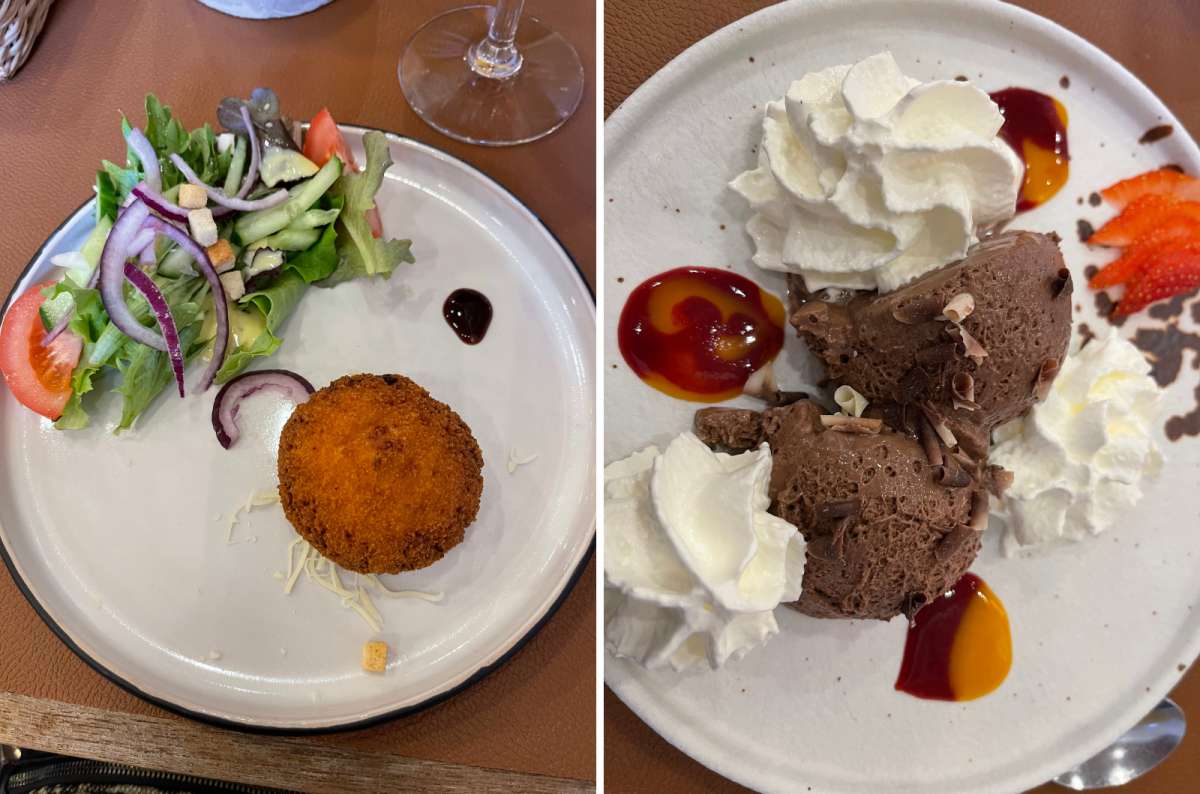
Cheese, chocolate, and everything Belgian
As you’d expect, Bruges Old Town is full of restaurants, and I want to warn you—even if you read reviews you can stumble into a tourist trap. This was somehow true everywhere in Belgium for me. Read my Belgium restaurant rankings to see which lunch and dinner places I can honestly recommend.
My favorite Bruges restaurants
I had one of the best steaks in Belgium in Bruges’ Christophe, and De Gastro makes food that looks and tastes way fancier than what the prices suggest. If you’re like me, you know a good food experience can make Bruges worth visiting (or not!), so pay attention where you eat.
Bruges cafes are ok
Don’t expect hipster-style cafes in Bruges—many cafés in Bruges double as brunch/lunch spots and are of the tourist-focused variety, but most are pretty cozy. No Starbucks in sight (just ignore the one at the train station).
Otto’s Belgian waffles are a must-try in Bruges

Why visit Bruges? For waffles like this—Otto Waffle Atelier is a must
There are waffle shops everywhere in Bruges, and unfortunately many of them serve mediocre waffles to unsuspecting tourists. Go to Otto Waffle Atelier for a next-level experience—I can’t shut up about it in any of my articles on my Belgium travel blog. You can even see how they make waffles from scratch. The best experience for me (besides eating the waffles, of course!) was running into Otto, the owner.
The best chocolate shop in Bruges
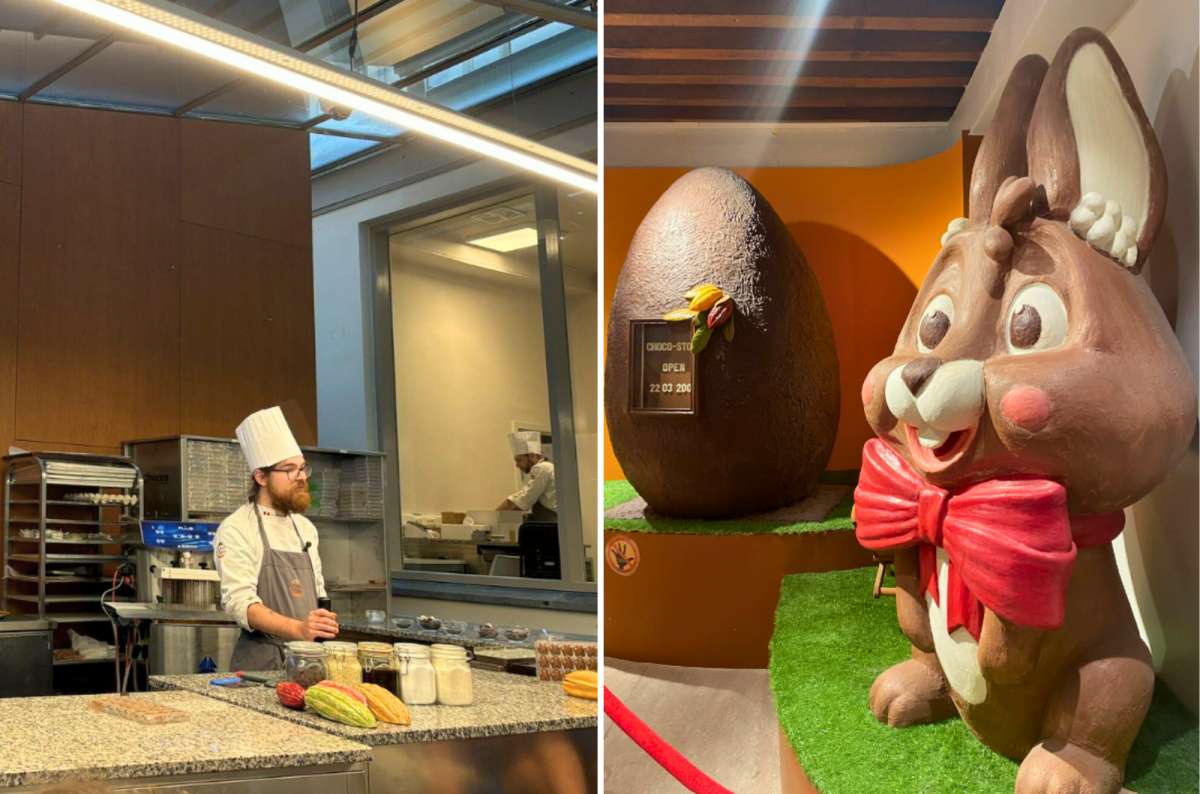
Learning how chocolate is made is almost as fun as eating it. Almost
Do you have a sweet tooth? Rejoice, because you’ll be spoiled for choice looking for Bruges chocolate shops. I raided L'atelier Du Chocolat—you can pick pralines, truffles, and bonbons and pay by weight (not your weight, luckily, though I suspect it will go up after your trip to Belgium). They’re little sweet works of art.
Pro chocolate tip: Choco Story Bruges is an interactive chocolate museum where you can learn all about the history and process of making chocolate. I have to say I liked the Choco Story in Brussels a little bit more—more interactive, more tastings. Read about it in another article:

Trying all of the best culinary experiences in Bruges is one way of making sure Bruges is worth visiting! Don’t miss out!
11. Focus on world famous Belgian beer in Bruges
Beer and Belgium are basically synonyms, and Bruges is one of the best places in Belgium to learn about the beer culture.

My absolute favorite thing to do in Bruges was the Bruges Beer Experience—an interactive, education, and super well-curated museum about beer. And no, it’s not just for beer lovers—they even have a kids tour! I thoroughly enjoyed all the fascinating exhibits, though I can’t say I was mad at the beer tasting at the end either. This is truly a Bruges must-do.
Another fantastic way to get immersed in Belgium’s beer heritage is visiting the only brewery that has stayed in central Bruges—De Halve Maan. Go for the beer pipeline (really!), stay for the rooftop views.
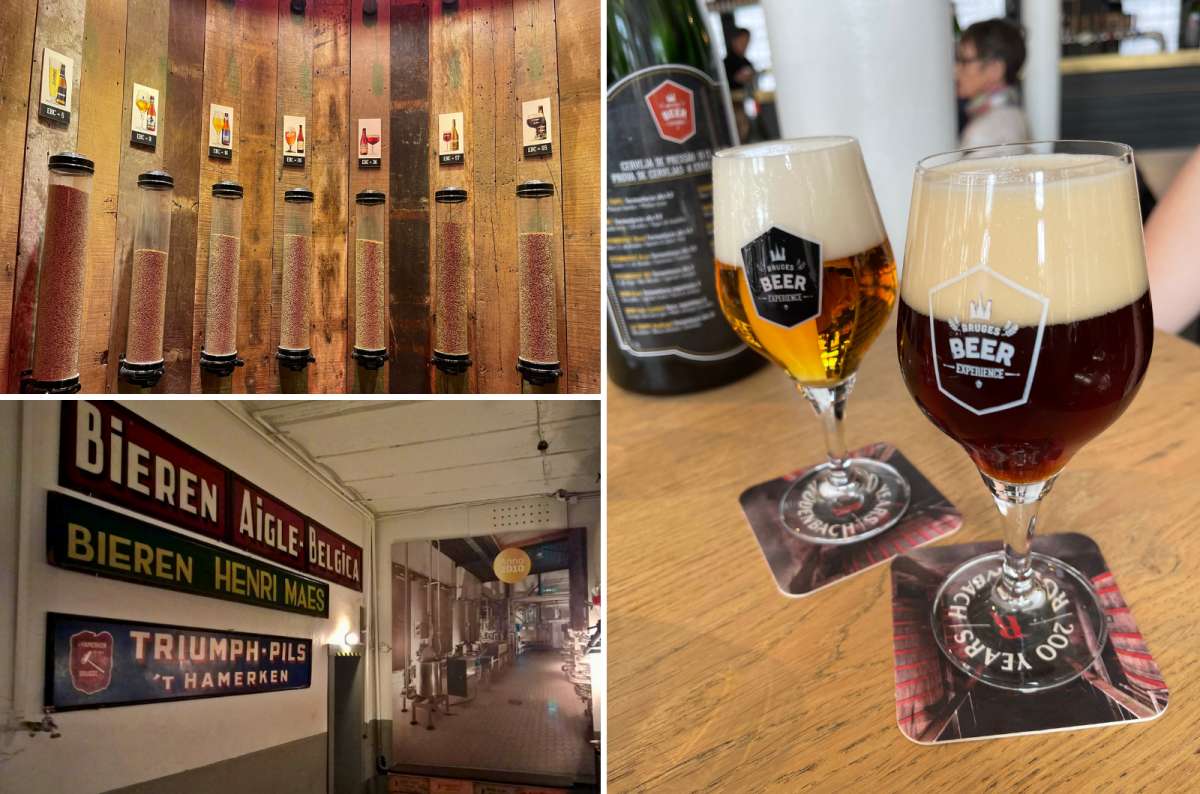
Not just for beer lovers—Bruges Beer Experience is a fun, interactive stop that ends with a well-earned tasting
12. Driving and parking in Bruges: don’t
Finally, a note about getting around. Driving into Bruges isn’t ideal—taking the train to travel around Belgium is the smartest choice. The trains are cheap, fast, and go everywhere you could wish for (as you can see in my article about day trips from Brussels by train).
Much of Bruges’ historic center is car-free or restricted, and parking is limited and pricey. Underground garages around EUR 16–18 per day. Street parking is capped at four hours, expensive, and hard to find. An ideal combo, right?
If you’re driving and on a budget, blue zones on the edges of town allow short free stays, and park-and-ride lots are cheap too.
Like I said, don’t visit Bruges with a car, you won’t need it and it’ll just be a nuisance.
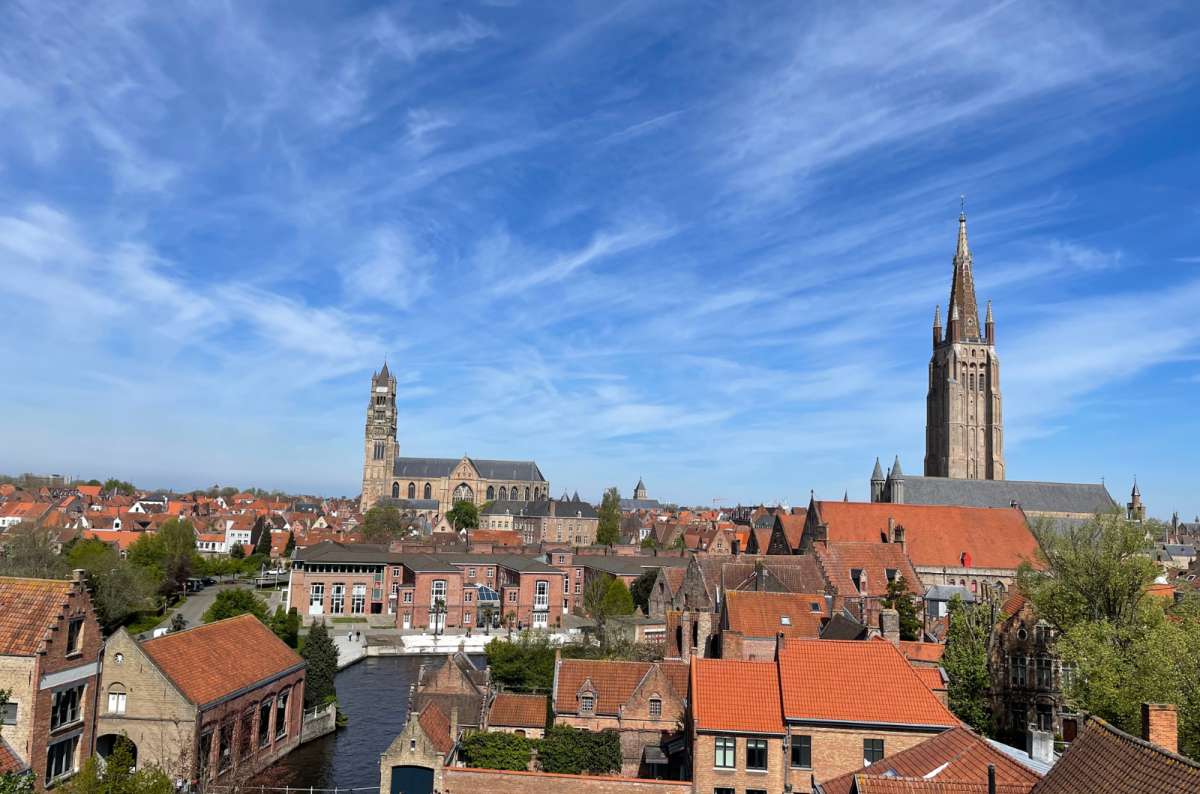
No car needed—Bruges’ stunning old town is best explored on foot (and by camera)
Final verdict: is Bruges worth visiting?
Yes, Bruges is worth visiting on a day trip. It’s a fairytale town with charming cobbled street and canals, it’s picturesque, and one day is the maximum I can take of the tourist crowds. Luckily, I felt I saw it all within a single day and didn’t miss out on any of the top things to do and was able to fit in some unique spots and great food, too.
If you stay overnight, you get the advantage of seeing Bruges without the day trippers, which may be worth considering, especially if you’re visiting Bruges in the summer. That said, I think the best time to visit Bruges (and Belgium in general) is the spring. Less people, less rain clouds, cheaper prices—win, win, win.
You might also be interested in reading:
Sometimes, all you need to do is take the first step... I've filtered out the best hotels in Bruges for you
Save it for yourself to come back to later, or share with your friends on social media!
I've already planned your ititnerary for the trip, complete with my travel tips.
This post contains affiliate links. If you make a booking through one of my links, I may earn a small commission—at no additional cost to you. Thank you for your support!
Quick rankings from my Bruges visit
4. Is Bruges worth visiting for the romantic atmosphere?
5. How to make the most of Bruges
7. What the architecture in Bruges Old Town looks like
8. How many days do you need in Bruges?
9. Bruges is very easy to visit on a day trip from Brussels
10. Where to find restaurants, waffles, and chocolate shops in Bruges
11. Focus on world famous Belgian beer in Bruges
12. Driving and parking in Bruges: don’t




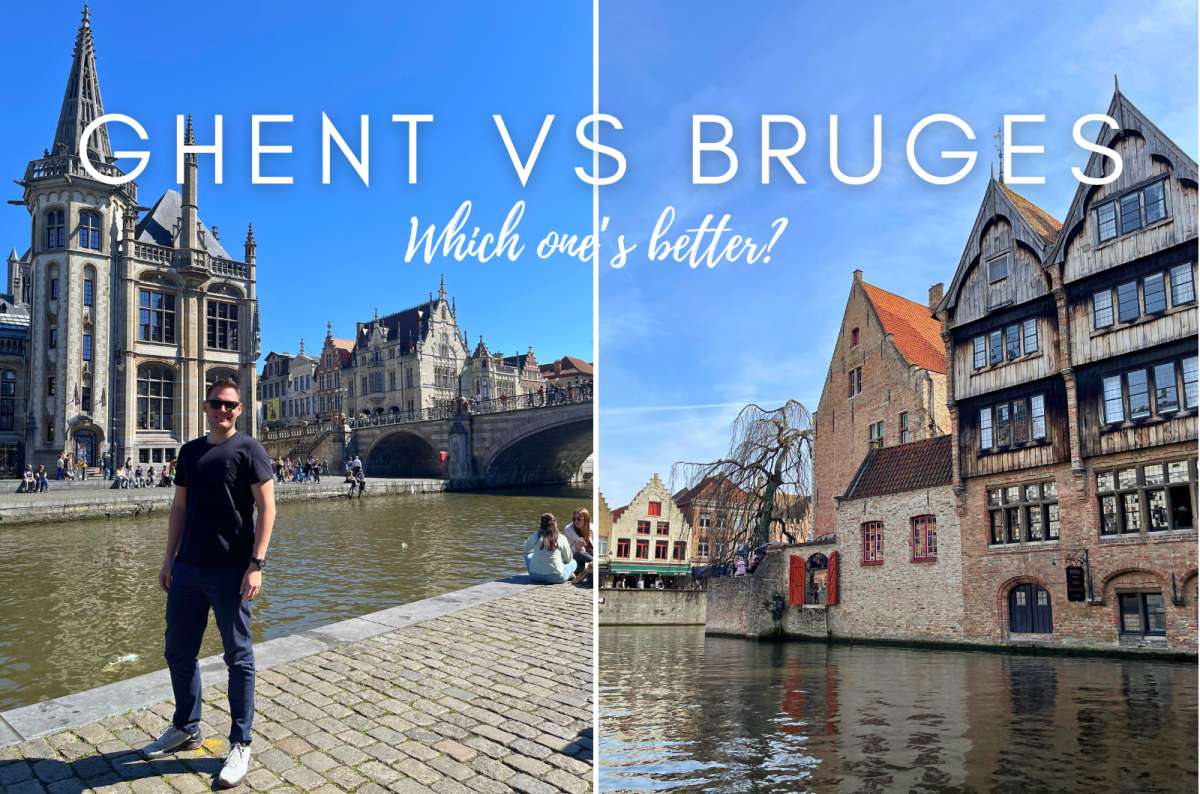
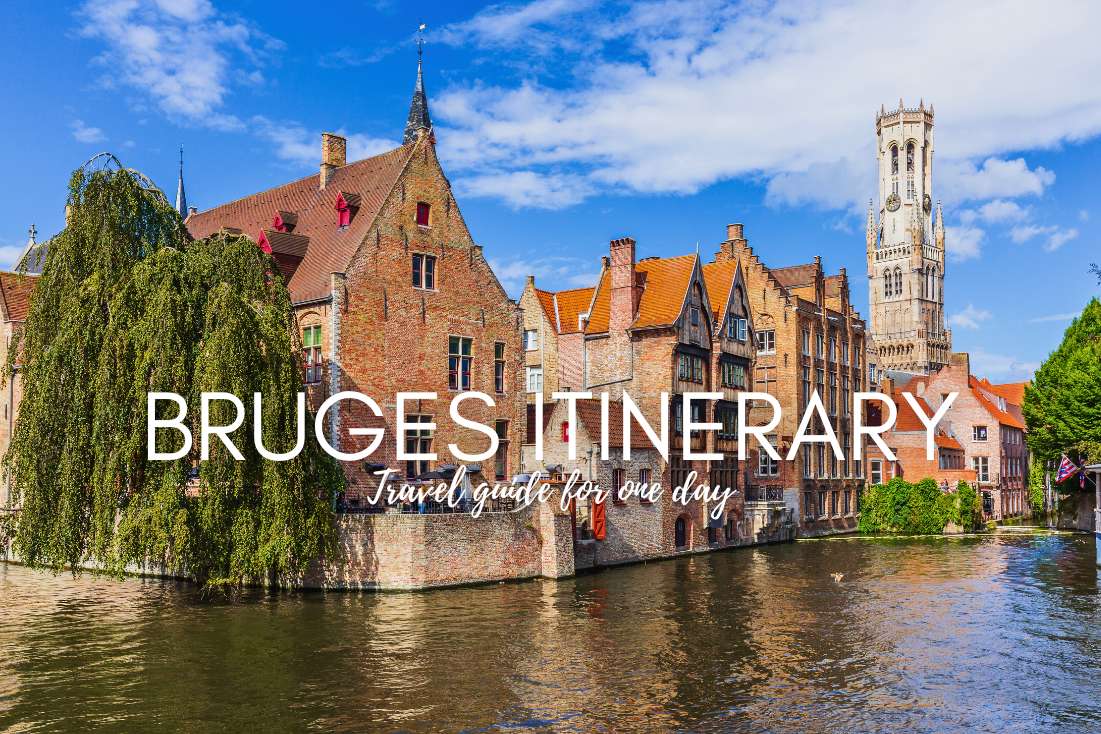




Comments | Thoughts? Give us a shout!